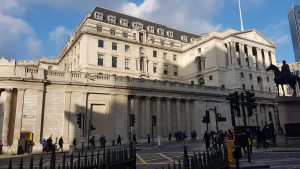Interest rate rise to between 6% and 9%

In 2014, our prediction foresaw the possibility of the Bank of England raising interest rates to a range of 6% to 9%. This increase would only occur after UK banks met their newly defined capital adequacy requirements, which refers to the level of capital they need to maintain to absorb losses during challenging economic conditions.
We anticipated that once the required capital adequacy level was met, the Bank of England would initiate a gradual process of raising interest rates in small increments of 0.25%, reaching up to 0.5% over a span of 3-5 years. This cautious approach aimed to prevent a repeat of the 2008 financial crisis. Afterward, the interest rates would eventually be pushed up to a range of 6% to 9%, which had been the typical pre-2008 rate (fluctuating between 10% and 5.5% from 1990 to 2008).
Realisation 2017
This prediction became a reality in November 2017 when the Bank of England implemented its first interest rate rise, increasing the base rate from 0.25% to 0.5%. The rate rises followed as predicted, but they were temporarily halted due to the impact of the COVID-19 pandemic. During the pandemic, the Bank of England engaged in a substantial money printing initiative.
In the post-COVID era, in 2023, interest rates rose significantly to around 5% at the time of writing. The Bank of England attributed these sharp increases to inflation, although our original prediction in 2017 did not foresee inflation as a significant factor, leading us to question this rationale for the rapid rate rises.
How would knowing this have helped your company get a competitive advantage?




